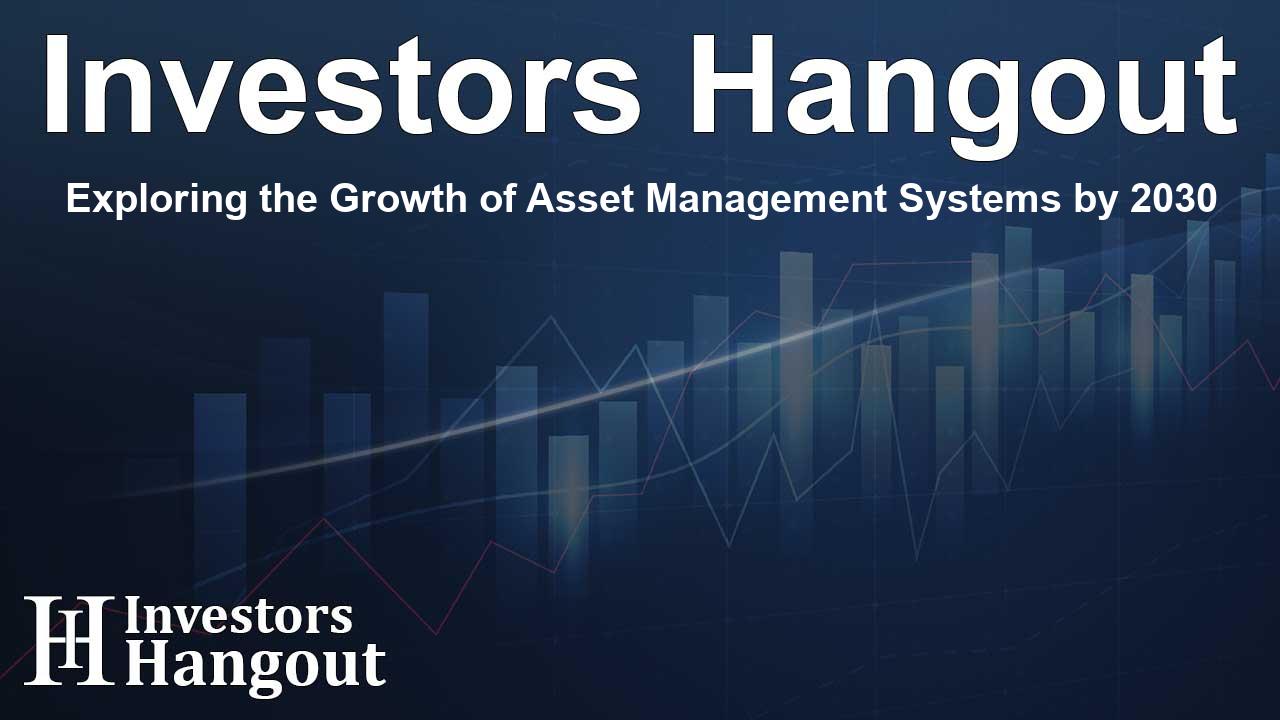Exploring the Growth of Asset Management Systems by 2030

Understanding the Asset Management System Market
The asset management system market is anticipated to significantly grow, reaching USD 26.41 billion by 2030. This surge is projected from USD 17.64 billion in 2025, representing a noteworthy Compound Annual Growth Rate (CAGR) of 8.4% throughout this forecast period. The demand for asset management systems is fueled by advancements in technologies such as the Internet of Things (IoT) and Artificial Intelligence (AI). These systems serve various industries, including retail, healthcare, transportation, and logistics, ensuring effective monitoring and tracking of assets.
Current Trends Influencing Market Growth
Several trends are shaping the growth trajectory of the asset management system market. One of the primary factors includes the increasing adoption of Global Positioning System (GPS) tracking devices, which help improve asset visibility. Additionally, government initiatives are further pushing the adoption of effective asset management strategies across sectors. The integration of IoT and AI technologies enables seamless connectivity and automation, transforming processes in multiple industries.
Expansion in the Retail Sector
The retail sector is projected to dominate the asset management system market. As retailers increasingly seek to improve inventory management and operational efficiency, they turn to advanced asset management solutions. Technologies such as RFID and real-time tracking systems are being actively adopted to streamline operations. Furthermore, the rise of e-commerce amplifies the demand for efficient inventory and distribution systems, making asset management essential for maintaining product availability and fulfilling customer orders swiftly.
Software Segment: A Growing Opportunity
The software segment of the asset management market is expected to register rapid growth, driven by the need for integrating data from various hardware components. Smart asset management solutions harness data from sensors, GPS trackers, and RFID tags to enhance decision-making capabilities. With businesses now focusing on data-driven approaches to manage assets, the development and use of advanced software are becoming crucial. Moreover, the compatibility of AI and machine learning with these software applications continues to expand market opportunities.
Market Dynamics across Regions
North America is projected to hold the largest market share due to significant investments in research and development across various sectors. The region's well-established infrastructure in retail and healthcare facilitates rapid adoption of sophisticated asset tracking solutions. With government policies promoting digital transformation within supply chain processes, the North American market is experiencing consistent growth. Moreover, the interest in cloud-based solutions and a focus on Industry 4.0 practices further encourage market expansion.
Key Players in Asset Management Systems
Key players in the global asset management system market include numerous reputable companies like Zebra Technologies Corp., Honeywell International, Inc., and Siemens AG among others. These companies stand out for their innovative solutions and extensive presence within the industry. They continuously seek to develop tailored asset management systems that meet the dynamic demands of various markets.
Future Outlook of the Market
The asset management system market is set to experience substantial growth driven by the rising integration of advanced technologies into everyday operations. As industries adapt to changing market landscapes, the requirement for efficient asset management solutions will only intensify. This transition is evident across multiple sectors, including logistics, healthcare, and retail, each requiring precise asset tracking to enhance overall operational efficiency.
Frequently Asked Questions
What is the projected growth of the asset management system market?
The asset management system market is expected to grow from USD 17.64 billion in 2025 to USD 26.41 billion by 2030 at a CAGR of 8.4%.
Which segment is likely to dominate the asset management system market?
The retail sector is projected to hold the largest market share during the forecast period due to increased demand for effective inventory management.
What factors drive the growth of the software segment?
Growing needs for data integration and decision-making capabilities are pivotal factors driving the growth of the software segment in asset management.
How is North America positioned in the asset management system market?
North America is expected to have the largest share due to significant investments in technology and infrastructure, supporting advanced asset management solutions.
Who are the main competitors in the asset management system market?
Major competitors include companies such as Zebra Technologies Corp., Honeywell International, Inc., and Siemens AG, offering innovative solutions tailored for various industries.
About Investors Hangout
Investors Hangout is a leading online stock forum for financial discussion and learning, offering a wide range of free tools and resources. It draws in traders of all levels, who exchange market knowledge, investigate trading tactics, and keep an eye on industry developments in real time. Featuring financial articles, stock message boards, quotes, charts, company profiles, and live news updates. Through cooperative learning and a wealth of informational resources, it helps users from novices creating their first portfolios to experts honing their techniques. Join Investors Hangout today: https://investorshangout.com/
Disclaimer: The content of this article is solely for general informational purposes only; it does not represent legal, financial, or investment advice. Investors Hangout does not offer financial advice; the author is not a licensed financial advisor. Consult a qualified advisor before making any financial or investment decisions based on this article. The author's interpretation of publicly available data shapes the opinions presented here; as a result, they should not be taken as advice to purchase, sell, or hold any securities mentioned or any other investments. The author does not guarantee the accuracy, completeness, or timeliness of any material, providing it "as is." Information and market conditions may change; past performance is not indicative of future outcomes. If any of the material offered here is inaccurate, please contact us for corrections.